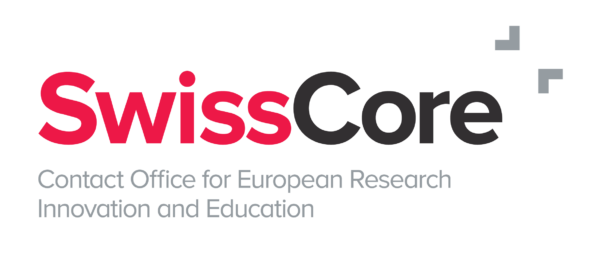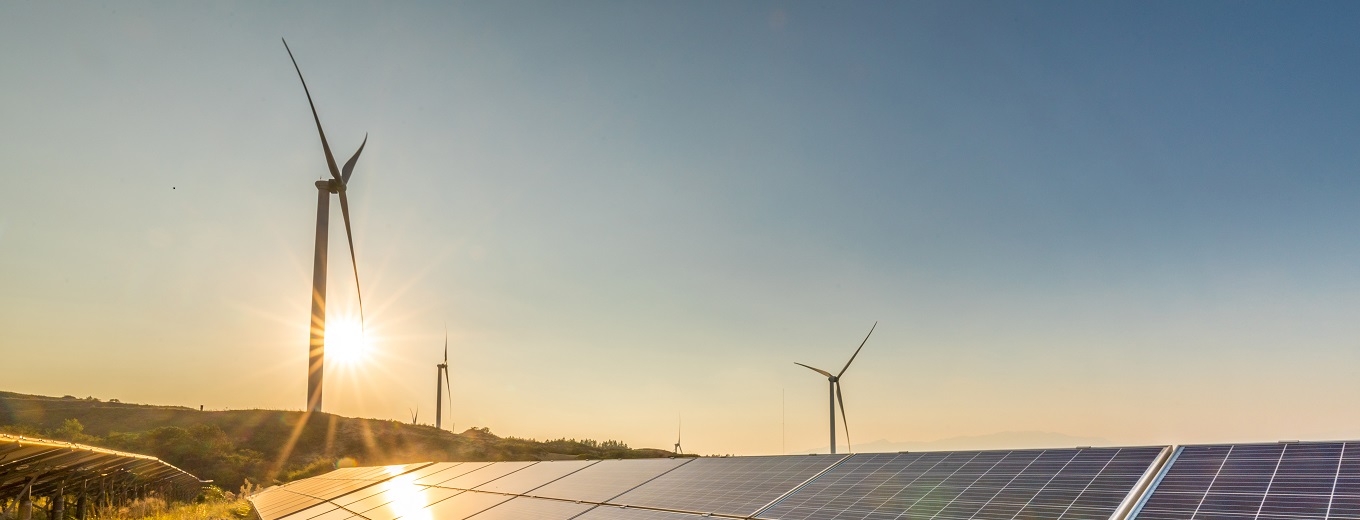Following up on announcements in March, the Commission presented its REPower EU plan and an analysis of defence gaps, including key R&I aspects in both areas.
On 18 May, the European Commission (EC) adopted the REPower EU plan for affordable, secure and sustainable energy for Europe, as announced in March, following the Russian invasion of Ukraine. The plan also follows up on the European Council’s Versailles Declaration, which called on the EC to come forward with a plan on how to tackle the EU’s urgent energy challenges (see SwissCore article). REPower EU serves to lay out the path towards a rapid reduction of the EU’s dependence on Russian fossil fuels. In 2021, 45% of the EU’s natural gas imports came from Russia, according to the EC’s REPower EU Communication from March 2022. The EC is confident that a significant reduction in Russian energy imports is possible already in 2022. This should be achieved by a set of actions to (1) save energy, (2) diversify supplies, (3) quickly substitute fossil fuels by accelerating Europe’s clean energy transition, and (4) combine investments and reforms judiciously. The plan builds on the implementation of the Fit for 55 package, currently under consideration by the Council and the European Parliament (EP). The package’s objective of a 55% reduction in carbon emissions by 2030 (compared to 1990) will not be altered. However, the trajectory to achieve this goal will need to change. The fast phasing out of fossil fuel imports from Russia will limit the originally foreseen role of gas as a transitional fuel until 2030. As a consequence, higher targets for renewables and energy efficiency will have to be reached. This is where an increased role for research, innovation and education comes into play.
Renewable hydrogen will play a key role in replacing natural gas, coal and oil in hard-to-decarbonise industries and transport. This explains the EC’s announcement to increase Horizon Europe funding for the Clean Hydrogen Joint Undertaking by € 200 million in order to double the number of Hydrogen Valleys. Furthermore, the EC plans to support Member States in pooling their public resources via “Important Projects of Common European Interest (IPCEI) focused on breakthrough technologies and innovation along the solar and wind energy and heat pumps value chains”. Moreover, the EC plans to set up an EU Solar Industry Alliance. To trigger more industrial investment, the EC intends to double the funding available for the 2022 Large Scale Call of the Innovation Fund this autumn to around € 3 billion. This dedicated REPowerEU window will support:
- innovative electrification and hydrogen applications in industry
- innovative clean tech manufacturing (such as electrolysers and fuel cells, innovative renewable equipment, energy storage or heat pumps for industrial uses)
- mid-sized pilot projects for validating, testing and optimising highly innovative solutions.
The EC plans to amend its proposal on the Renewable Energy Directive – one change should also provide for the possibility to create regulatory sandboxes to foster innovation in the energy sector. The REPower EU plan also foresees that the InvestEU Programme will mobilise private funds contributing to achieving the plan’s policy goals.
The EC encourages stakeholders in renewable energy production and permitting authorities to establish a large-scale skills partnership under the Pact for Skills to address the respective skills shortages. Furthermore, the EC will support skills through ERASMUS+ and the Joint Undertaking on Clean Hydrogen, with the launch of a large project to develop skills for the hydrogen economy.
The REPower EU plan moves beyond solely addressing the energy area as such and stresses that strengthening circular economy models must be a priority: “Support for research and innovation, including through Horizon Europe, will be provided to reduce materials consumption, enhance recyclability of renewable energy equipment and substitute critical raw materials.”
The Commisssion also followed up on the Versailles Declaration on the subject of defence. The EC and the High Representative of the Union for Foreign Affairs and Security Policy adopted on 18 May an analysis of the EU’s defence gaps and possible next steps. The analysis carried out by the European Defence Agency (EDA), the EC, and the High Representative examined gaps in funding, in the competitiveness of the EU’s defence industry, as well as capability gaps. Key issues identified included low increases of defence expenditures, fragmentation of defence industries along national borders, and foreign dependencies for key defence equipment. The capabilities analysis revealed low stockpiles, aged systems, and a need to reinforce air and missile defence systems. The analysis identified as a main shortcoming in the R&I area that Member States’ combined expenditure amount to only 1.2% of their total defence spending, far below the 2% EDA benchmark and the commitment under the Permanent Structured Cooperation (PESCO) framework.
In addition to identifying important areas for R&I investments, such as cyber, the joint communication of EC and High Representative identifies a potential for more synergies: To further reinforce the EU’s defence industrial capacity, the EC “will consider possible amendments to the framework for dual-use research and innovation to improve synergies between civil and defence instruments”. Furthermore, the EC plans to make the European Defence Fund (EDF) attractive for new entrants and support defence innovation, together with the EDA, through the announced EU Defence Innovation Scheme (EUDIS). “A blending facility under InvestEU, supporting innovation and targeting SMEs and Mid-Caps developing defence technologies, in cooperation with the European Investment Fund, will be part of it.” The EC and the High Representative, as well the EDA recommend that the European Council endorse the gap analysis and the need “to urgently and collectively address the EU’s short-term and medium-term defence investment gaps”.
On 25 May, the EC adopted the implementing decision on the financing of the European Defence Fund (EDF) and part II of the EDF work programme for 2022. The latter includes actions covering a wide range of topics, such as cyber, space, air combat, digital transformation, and disruptive technologies, e.g. for adaptive camouflage. The EU’s maximum contribution is set at € 668.5 million. In addition to the concrete EDF call topics for 2022, the EC also adopted an ‘indicative multiannual perspective 2021-2027’, laying down the principal expected outcomes from EDF 2021-2027 support in different defence technology fields.
Related to the war in Ukraine, on 10 May, the EC stepped up its support for displaced Ukrainian researchers. As part of the spring update of the current Horizon Europe work programme, the EC announced the launch of the MSCA4Ukraine scheme under the Marie Skłodowska-Curie Actions. The scheme aims at supporting displaced researchers from Ukraine to continue their work in academic or non-academic organisations in Europe. It also includes a component that will help them to re-establish themselves in Ukraine and rebuild the country’s R&I capacity.
After the conclusion of exploratory talks with New Zealand and Canada on the two countries’ association to Horizon Europe last month (see SwissCore article), the EC announced on 12 May the launch of discussions to explore Japan’s association to the framework programme. Japan joins the Republic of Korea, which started talks earlier in spring. Meanwhile, there is no progress for the association of Switzerland and the UK (see SwissCore article).
On 9 May, the Executive Board of the Conference on the Future of Europe, co-chaired by representatives of the three EU institutions, presented to the Presidents of the EP, the Council of the EU, and the EC – and to the public – the report on the final conference outcome. With this symbolic act, a one-year process of debate and collaboration between citizens and politicians about the EU’s future reached its conclusion, resulting in a report of 49 proposals and more than 320 measures for the EU institutions to follow up. The proposals reflect the expectations of EU citizens and politicians on nine topics: A stronger economy, social justice and jobs; Education, culture, youth and sport; Digital transformation; European democracy; Values and rights, rule of law, security; Climate change, environment; Health; EU in the world; and Migration. While R&I was not defined as a dedicated topic area, an omission criticised earlier in the process by European R&I organisations (see SwissCore article), it is mentioned across the other topics, mostly in the context of climate change, environment, health, and the economy. The report typically refers to the importance of R&I and the need for further investments in the context of the different, aforementioned topics. Whereas R&I topics make scattered appearances throughout the document, the report includes a dedicated chapter on education (see SwissCore article). Over the course of the coming months, the three institutions, each within their own competences and in accordance with the EU Treaties, will examine how to follow up to the report.
Last but not least, the EC’s Joint Research Centre (JRC) published its 2021 Annual Report on 12 May. The document informs about the JRC’s contributions to the efforts to tackle the pandemic, it anticipates future trends, and informs about how the JRC contributes to the New European Bauhaus initiative, which is managed by the Centre. The report also includes a series of examples, of how the JRC contributed in 2021 to the EC’s priorities.

